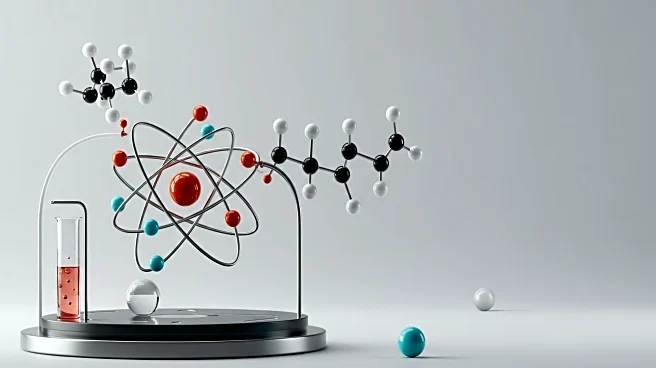What's Happening?
Researchers have developed a novel method for converting methane into C2 liquid oxygenates using ruthenium (Ru) atom arrays. The fabrication of Ru atom arrays on graphdiyne (GDY) involves synergistic interactions and spatial confinement effects, allowing for precise control over the anchoring position and distance between metal atoms. This innovative approach enhances the catalytic performance, enabling efficient methane oxidation and the production of valuable liquid oxygenates such as ethanol and ethylene glycol. The study highlights the potential of Ru atom arrays in promoting C-C coupling and optimizing reaction pathways.
Why It's Important?
The conversion of methane into liquid oxygenates represents a significant advancement in energy conversion and chemical synthesis. Methane, a potent greenhouse gas, can be transformed into valuable chemicals, reducing environmental impact and providing an alternative source of liquid fuels. The development of Ru atom arrays offers a promising solution for efficient methane utilization, potentially contributing to sustainable energy practices and reducing reliance on fossil fuels. This research underscores the importance of atomic-level precision in catalyst design, paving the way for future innovations in chemical engineering.
Beyond the Headlines
The study's findings have broader implications for the field of catalysis and materials science. The ability to control metal atom interactions at the atomic level opens new avenues for designing catalysts with tailored properties, enhancing reaction selectivity and efficiency. This approach may lead to breakthroughs in other catalytic processes, such as CO2 reduction and hydrogen production. Additionally, the research highlights the potential for integrating advanced materials like GDY into catalytic systems, offering insights into the development of next-generation catalysts.















